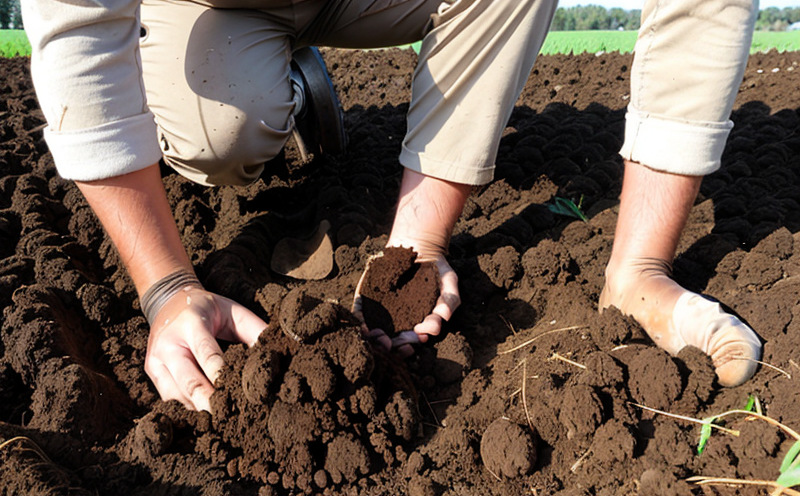Soil Permeability Testing
Soil permeability testing is a critical component of agricultural and forestry quality management. It evaluates how water moves through soil, which is essential for understanding the physical properties of soil that influence plant growth, irrigation efficiency, and drainage capacity.
The importance of soil permeability cannot be overstated in agriculture and forestry. Poorly drained soils can lead to waterlogging, which hinders root respiration, nutrient uptake, and ultimately plant health. Conversely, excessively permeable soils may result in rapid runoff, causing erosion and reducing the availability of essential nutrients for plants.
Understanding soil permeability helps farmers and foresters make informed decisions about crop selection, irrigation strategies, and fertilization practices. By identifying areas with poor drainage or excessive water loss, these professionals can implement targeted interventions to enhance soil quality and promote sustainable land use.
The primary objective of soil permeability testing is to determine the rate at which water passes through a given volume of soil under specified conditions. This information is crucial for designing effective irrigation systems, predicting potential environmental impacts, and ensuring compliance with regulatory standards.
Testing methods typically involve placing a known amount of water in a standard container filled with the soil sample and measuring how quickly it drains out. The permeability coefficient (k) is calculated based on this data using Darcy's law:
- Darcy’s Law: This fundamental principle of soil physics describes the relationship between fluid velocity, hydraulic gradient, and permeability.
- Where:
- v = Velocity (m/s)
- A = Cross-sectional area perpendicular to flow direction (m²)
- h = Hydraulic head (m)
Scope and Methodology
The scope of soil permeability testing includes determining the hydraulic conductivity of various soil types under different conditions. This involves selecting appropriate test methods that account for factors such as soil texture, structure, organic matter content, and moisture levels.
Commonly used techniques include:
- Self-weight Permeameter Method: Suitable for fine-grained soils where self-weight can be applied to create a hydraulic gradient.
- Guelph Permeameter Method: Used for larger, more compact soil samples that require external pressure.
The methodology also encompasses preparing the soil sample correctly. This involves sieving, drying, and mixing the soil to ensure uniformity before placing it in a permeameter or other testing apparatus. Proper specimen preparation is crucial for obtaining accurate results since variations in particle size distribution can significantly affect measured permeability values.
Once prepared, the soil sample is placed into the permeameter and submerged in water until equilibrium is reached. Water then flows through the soil under controlled conditions, allowing measurement of its discharge rate. From this data, the hydraulic conductivity (k) is calculated using Darcy’s law mentioned earlier.
It's important to note that while these methods provide valuable insights into soil permeability, they assume steady-state flow conditions which may not always hold true in natural settings. Therefore, additional considerations like seasonal variations and land use practices should be taken into account when interpreting results.
Why Choose This Test
- Ensure Optimal Irrigation Efficiency: Knowing the soil permeability helps tailor irrigation schedules to match the specific needs of crops, reducing water waste and enhancing resource utilization.
- Promote Sustainable Land Use: By understanding how water moves through different types of soils, land managers can implement practices that prevent erosion while maximizing agricultural productivity.
- Compliance with Standards: Many regions have regulations governing the quality and management of agricultural lands. Performing regular soil permeability tests ensures compliance with these standards.
Environmental and Sustainability Contributions
Soil permeability testing plays a vital role in promoting environmental sustainability by helping stakeholders manage resources more efficiently and minimize ecological impacts. For instance, accurate knowledge of soil permeability allows for better planning of drainage systems to prevent flooding while simultaneously conserving water.
- Promoting Water Conservation: Understanding soil permeability enables the design of efficient irrigation systems that deliver water directly where needed, minimizing unnecessary runoff and evaporation losses.
- Erosion Control: By identifying areas prone to excessive water loss due to poor soil structure, interventions can be implemented to improve stability and reduce sediment transport into nearby water bodies.





